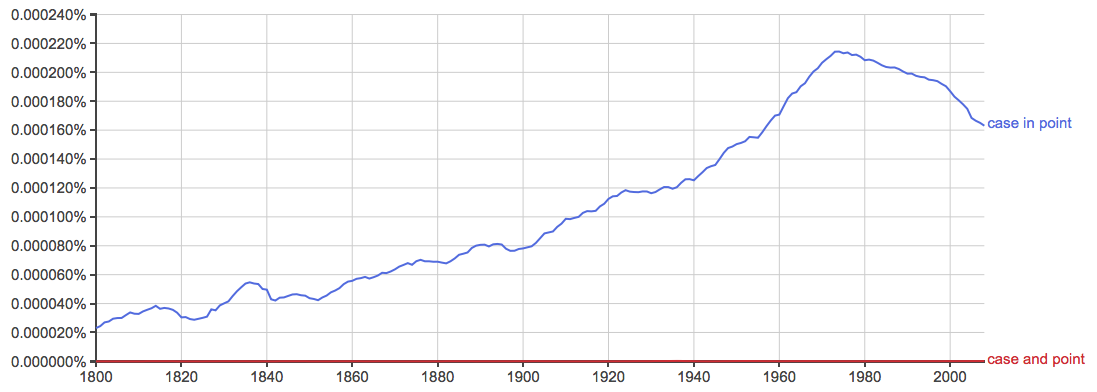Idioms are a great way to add color to your writing. They can make dry topics seem more relatable, and they help you navigate the daunting world of professional correspondence by signaling familiarity and approachability to coworkers or subordinates.
If you are going to use idioms, though, you had better be sure to get them right. Botching a common expression is a surefire way to lose credibility in the eyes of your readers. One phrase, in particular, is often misused: case in point. Or is it case and point? Read on to learn the truth.
What is the Difference Between Case in Point and Case and Point?
In this post, I will compare case in point vs. case and point. I will outline which of these is the correct expression and use it in its proper context with example sentences.
I will also show you a mnemonic device that can help you choose the correct phrase any time you use it in your own writing.
When to Use Case in Point
 What does case in point mean? Case in point is an idiom that means an example that supports one’s argument. Merriam-Webster first recorded its use 1647, and it has been a popular expression ever since. Here are few examples of case in point in sentences:
What does case in point mean? Case in point is an idiom that means an example that supports one’s argument. Merriam-Webster first recorded its use 1647, and it has been a popular expression ever since. Here are few examples of case in point in sentences:
- “The way you dress communicates a lot about your personality, case in point, Todd’s sloppy outfit today,” said Todd’s boss.
- It’s not hard to find a job if you are willing to work. Case in point, my office is hiring right now.
- The harder you work, the more successful you will be; Frederick Douglass is a case in point.
- A case in point involved the FBI, which last year paid hundreds of thousands of dollars for a solution to crack an iPhone that had been used by a terrorist in the San Bernardino, Calif., mass shootings in 2015. –The Washington Post
For a more full discussion on the origin of case in point, see here.
When to Use Case and Point
What does case and point mean? Case and point is a misspelling of the expression case in point. It is considered a spelling error.
Below, you can see a graph of that charts the usage of case and point vs. case in point:

As you can see, almost no one uses case and point. Its use barely registers a blip over the last 200 years on English writing.
Trick to Remember the Difference
 Now, let’s go over a trick you can use when you’re stuck choosing case and point or case in point.
Now, let’s go over a trick you can use when you’re stuck choosing case and point or case in point.
You should always choose case in point. It is the correct version of this idiom and has been since roughly 1647.
To remember to use case in point, imagine a skilled rhetorician putting the sharp point of his expository blade inside a case after he is done excoriating someone. The point is in the case.
Another way to look at it is that you poking a hole in someone’s argument. This mental image will help you remember that case in point is the correct form of this phrase.
Summary
Is it case in point or case and point? Case in point and case and point are different spellings of the same phrase, which means an example that supports one’s argument.
- Case in point is correct.
- Case and point is a spelling error.
If you have any other questions, be sure to check this site for help with other writing topics.
Contents
